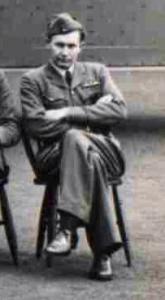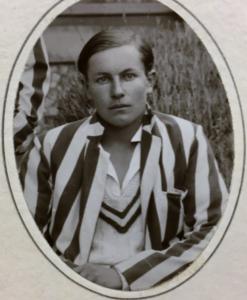
|

|
| Squadron Leader Anthony Charles Letteblere AKROYD-STUART (72476) | |
|
76 Squadron Royal Air Force Date of birth: 22nd September 1916 Date of death: 31st August 1943 Killed in action aged 26 Buried at Roermond (Kapel in T'Zand) Roman Catholic Cemetery Plot 23 Grave 6 |

|
| Anthony Charles Letteblere Akroyd-Stuart was born at Claremont in Western Australia on the 22nd of September 1916 the son of Charles Henry Akroyd-Stuart, a mechanical engineer, and Helena (nee Ievers) Akroyd-Stuart of St Anthony's Close, Winchelsea in Sussex. He was educated at Lancing College where he was in Sandersons House from September 1930 to December 1934. He was appointed as a House Captain and as a Prefect in 1934 and was a member of the Cricket XI the same year. He went on to Trinity College, Oxford in 1936 where he achieved a BA. He was commissioned as a Pilot Officer in the Royal Air Force Volunteer Reserve on the 13th of September 1938 but relinquished his commission when he was granted a permanent commission in the Royal Air Force with the rank of Pilot Officer on the 7th of October 1939. He was promoted to Flying Officer on the 7th of April 1940 and was posted to 77 Squadron based at RAF Kinloss. On the 23rd of September 1940 he and his crew took off in Whitley Mk V P4942 from RAF Linton-on-Ouse for an operation on Berlin. On their return they ran out of fuel and at 4am they crash landed in a field near Appleton-le-Street with the crew escaping unharmed. They were gathered up by a local retired army Major and taken to breakfast at his house in Amotherby. He was promoted to Flight Lieutenant on the 7th of April 1941 with seniority from the 7th of January 1941. On the 14th of August 1941 he was at Medicine Hat in Alberta in command of 34 Empire Flight Training School when he commanded a guard of honour of 100 men to mark the visit of HRH The Duke of Kent. He was promoted to Squadron Leader on the 1st of March 1942. On the night of the 30th/31st of August 1943 Bomber Command dispatched a force of 297 Lancasters, 185 Halifaxes, 107 Stirlings, 57 Wellingtons and 14 Mosquitos for an operation to Monchengladbach and the nearby town of Rheydt. The plan was for the Pathfinders to mark Monchengladbach with target indicators first, and two minutes later, to mark Rheydt. Visibility was good and target marking was described as "model". The result was that around half of the buildings in both towns were damaged or destroyed with the main railway station in Rheydt being particularly hard hit. Charles Akroyd-Stuart and his crew took off from RAF Holme-on Spalding Moor in Halifax Mk V DK207 MP-S |
|
 | |
| Sandersons House |
Back